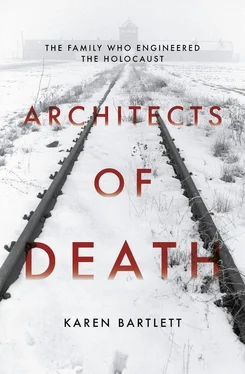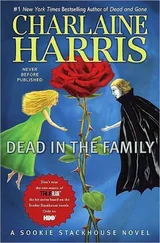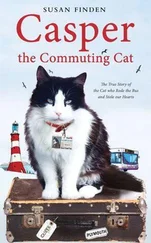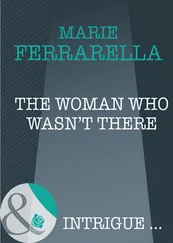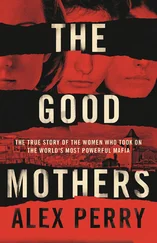In the case of the Topf brothers the reality of ‘doing anything’ meant only one thing – becoming members of the Nazi Party. A leading Thuringia Nazi, Friedrich Triebel, informed the brothers that, given their relatively young ages, there was nothing to prevent them from ‘retraining’ as party members and regaining control of the firm. Even Jewish friends and business acquaintances agreed that this seemed to be the only solution, and so without having shown any prior political interest, both Ernst Wolfgang and Ludwig became National Socialist Party members in April 1933. Kurt Prüfer and other senior Topf officials followed suit.
Now the Topf brothers were granted a hearing at the Board of Creditors and their dismissal from Topf was overturned; reinstated, the brothers then sacked the acting Topf board of directors. By July 1933, the battle for Topf and Sons was over. Ernst Wolfgang Topf was listed as commercial director with Ludwig Topf named technical director. The brothers were finally in control of their father’s company, but their deal with the Nazis would prove costly. Ultimately, they would pay by sacrificing every shred of moral decency and humanity they possessed.
CHAPTER TWO
A DEAL WITH THE DEVIL
Honour your work! It confers dignity
And with confidence in your own strength
Life’s burdens become light
When you work cheerfully and with firm purpose
The company’s management
Along with the band of workers
Will gladly proclaim
That our loyalty was always true
It has been even more beautiful in Germany’s regions
Since the coming of the Third Reich
It is splendid to behold
The way Hitler has united us
Status and castes have gone
Unity reigns everywhere
Poverty and distress have been overcome
After a painful fall, came Germany’s rise
POEM TO COMMEMORATE SIXTY YEARS OF TOPF AND SONS PUBLISHED IN A COMPANY BOOKLET 1938
[10] J. A. Topf commemorative brochure, Landesarchiv Thüringen – Hauptstaatsarchiv Weimar.
By 1938, Ernst Wolfgang and Ludwig Topf felt they had much to celebrate – and celebrate they did. An elaborate ceremony was held to mark the sixtieth anniversary of the re-founding of Topf and Sons with a party in the Topf family park on 28 August, a commemorative booklet full of cartoons, witty epithets and poems was published, and an ambitious plan to rebuild the company’s administration building launched (the plan was to erect a company sign with the logo and the words ‘Topf and Sons 1878’ to fit on a new, more impressive, and steeply pitched roof). The Topf brothers had been in full control of the family firm for five years and they were starting to enjoy the prosperous upturn in their fortunes.
For the moment, the dominating presence of their mother continued to restrain any impulse the brothers had towards luxury. Else maintained control over the company as a majority shareholder, even after the appointment of her sons as directors in 1933. In the most crucial matters, Else’s decisions were all important: she held a veto over large investments, property purchases or sales and investment in other companies; she stipulated that all profits should be ploughed back into company development for ten years. Knowing, perhaps, her sons’ true characters, she also kept their salaries at a moderate sum of 700 RM a month. Only her death in 1941 would finally set them free, and one of the Topf brothers’ first acts, as their mother had feared, was to award themselves a massive pay rise and start spending their company dividends.
However, even before their mother’s death, the Topf boys had started to enjoy the good life. Although Ludwig used the opening of the new administration building to remind staff to be as careful with their coffee cups and cigarette ends as they were in their own home, by the time that the brothers were using the sixtieth anniversary of Topf and Sons to celebrate their father’s wisdom as a thrifty businessman, they had acquired no fewer than fourteen luxury cars, including an Adler-Diploma Horch V-8 and a limousine with a rolling roof, all of which sat gleaming in the parking lot.
While Ernst Wolfgang lived with his wife and two children in a rented apartment, Ludwig endeavoured to live up to his reputation as the family playboy by building a modernist villa for himself in the Topf family park, and resisted any pressure to marry and settle down. In 1936, he took the opportunity of writing a will to exhort his more staid married siblings to ‘rise above the messiness of life’ as he claimed to do, ‘stay healthy, and don’t get worked up about things, and do drink and smoke mightily’.
Ludwig claimed the Topf family villa (which he also decorated with the company logo) was a suitable ‘expression of the prosperity of the company proprietors to the very numerous visitors and customers from abroad’. In the spirit of expressing his prosperity to the fullest, he installed two bathtubs, one black and one white, for use respectively by the brunettes and blondes he entertained. Outside the front door he built a swimming pool, enjoyed mainly by his cousin Agnes, who would come over in the morning for a dip before starting work at the famous kindergarten she had founded in a neighbouring street.
After the shocking suicide of their father, and the lost and lonely years of their youth, it must have seemed to the Topf brothers that the good times had finally arrived. There was no doubt that the company was doing well or that the decision by Ernst Wolfgang and Ludwig to join the Nazi Party was a fortuitous one, at least economically. Topf and Sons owed its financial success to the fact that the Third Reich was investing heavily in military preparations. With decades of expertise, Topf and Sons was the ideal supplier for the four-year militarisation plan announced by the German Reich in 1936, and the company had in fact begun producing large storage tanks for grain as early as 1934. The purpose of these tanks was to provide food for an army and civilian population in the event of war, and supplying them would come to dominate production at Topf and Sons. Storage tank production, now housed in its separate department in the company, would become the largest source of income for the company during the second half of the 1930s and drove the increase in the company’s turnover from 1 million RM in 1933 to 7 million RM in 1940. In July of that year, Topf and Sons received 6.3 million RM for producing forty-six military storage tanks and twenty-seven for other purposes. Storage construction work was not only the backbone of the company’s financial success, but also played another key role, too – it allowed Topf and Sons to petition the Reich to classify a large proportion of company employees as ‘Uk’ workers (those in occupations deemed indispensable for military or civilian life, and thus exempt from army service).
Like many German companies, Topf and Sons was clearly profiting enormously from its collaboration with the Third Reich in war preparations (a staggeringly inept economic strategy, supported by Hitler, which meant that the country was mortgaging its future assets and racking up unsustainable levels of debt) but there remained little sign that either Ernst Wolfgang and Ludwig were any more ideologically in tune with the Nazis than they had been when they conveniently joined the party in 1933.
Neither brother displayed any signs of anti-Semitism and the Topf family had a long history of business dealings with Jewish families who had been allowed to resettle in Erfurt since the early nineteenth century, and were now intertwined with business and cultural life.
Examples of prominent Jewish businesses included the hugely popular Römishcer Kaiser department store, which was launched by Siegfried Pinthus and Arthur Solms Arndtheim and, at its height in the late 1920s and early 1930s, employed 450 people, before it was forcibly ‘Aryanised’ and appropriated in a compulsory sale to non-Jewish owners in 1936 (or ‘fell under new management’ as the newspaper advertisements stated). The Römischer Kaiser brought a touch of glamour to Erfurt that included a large lounge to host fashion shows, a lending library with 5,000 volumes and a company crèche.
Читать дальше
